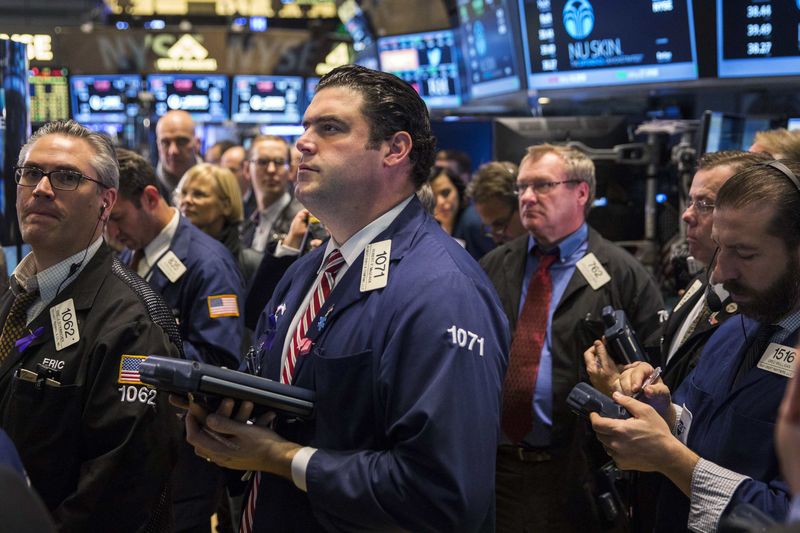Investing.com – Wall Street traded slightly lower on Monday as a data-less trading session gave investors time to evaluate last week’s large upward move on the back of Donald Trump’s presidential election victory.
At 12:16PM ET (17:16GMT), the Dow Jones lost 22 points, or 0.12%, the S&P 500 fell 7 points, or 0.33% while the tech-heavy Nasdaq Composite traded down 31 points, or 0.59%.
Last week, the Dow recorded its biggest weekly gain since December 2011, while the S&P 500 saw its biggest weekly gain since October 2014. The Nasdaq Composite rose 3.8%, its biggest one-week jump since February of this year.
Though stocks have benefited from expectations that Trump will embark on infrastructure spending and tax cuts that will stimulate the economy when he officially takes office in January, the bullish sentiment appeared to run out of steam for U.S. equities on Monday.
No major data releases were scheduled, giving investors little incentive to adjust market positions.
However, several U.S. central bank officials were on tap for appearances later in the day with Dallas Fed president Robert Kaplan set to participate in an economic forum at 1:20PM ET (19:20GMT).
Richmond Fed chief Jeffrey Lacker and San Francisco Fed president John Williams were set to appear after the market close on Monday.
Speculation that inflation will begin to rise on the back of Trump’s new policies all but cemented the chances that the Fed will hike rates at its December 13-14 meeting.
Odds for policy tightening at the end-of-the-year decision surged past the 90% threshold on Monday, before easing to their current 85.8%, according to Investing.com's Fed Rate Monitor Tool.
That compared to 58.6% odds before the September meeting or 73.3% prior to the November decision to remain on hold.
Fed chair Janet Yellen could set the record straight on the future of monetary policy in her testimony to congress this coming Thursday.
In the meantime, the increased rate hike expectations have been causing a rout in global bonds as investors require higher yields, with more than $1 trillion being wiped off the value of global bonds last week. Bond prices and yields move inversely.
As the sell-off continued, yields on both 2-year and 10-year Treasuries hit their highest level since January before also easing in mid-morning trade.
The dollar too benefited from heightened inflation expectations, hitting an 11-month high against other major currencies.
On a slow company news day, investors focused on M&A activity.
Shares in Harman International Industries (NYSE:HAR) soared more than 25% after receiving an $8 billion offer from Samsung Electronics (KS:005930).
Mentor Graphics Corporation (NASDAQ:MENT) also surged more than 18% after Siemens AG (DE:SIEGn) sealed its acquisition in a $4.45 billion deal.
Meanwhile, oil prices slumped to a three-month low on a strong dollar and concerns that OPEC will be unable to reach a deal at the cartel’s November 30 meeting that will have a meaningful impact on reducing the global supply cut.
Data late Friday showed that U.S. oil drillers continued to ramp up production. According to Baker Hughes, the number of oil rigs actively drilling in the U.S. increased by 2 in the prior week, marking its 21st increase in the last 24 weeks.
U.S. crude futures sumped 2.40% to $42.37 by 12:19PM ET (17:19GMT), while Brent oil traded down 2.21% to $43.76.
